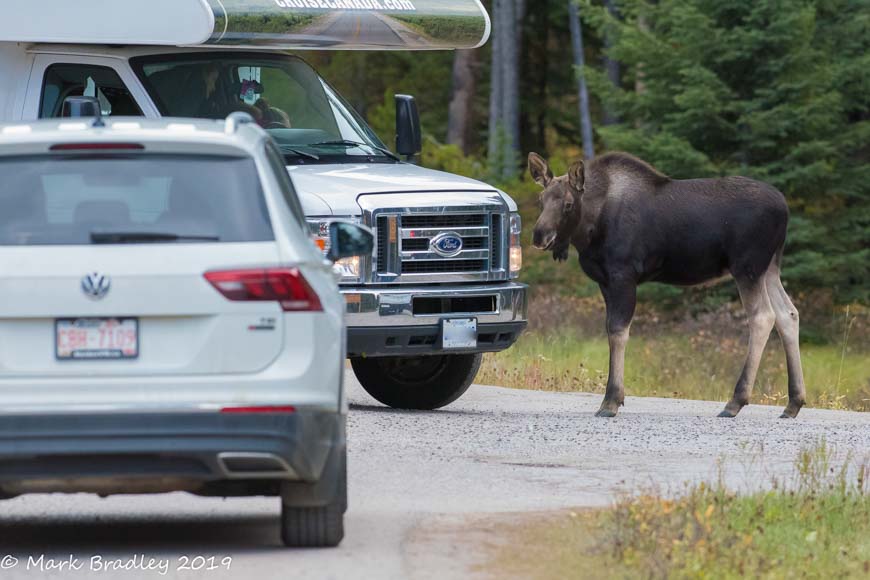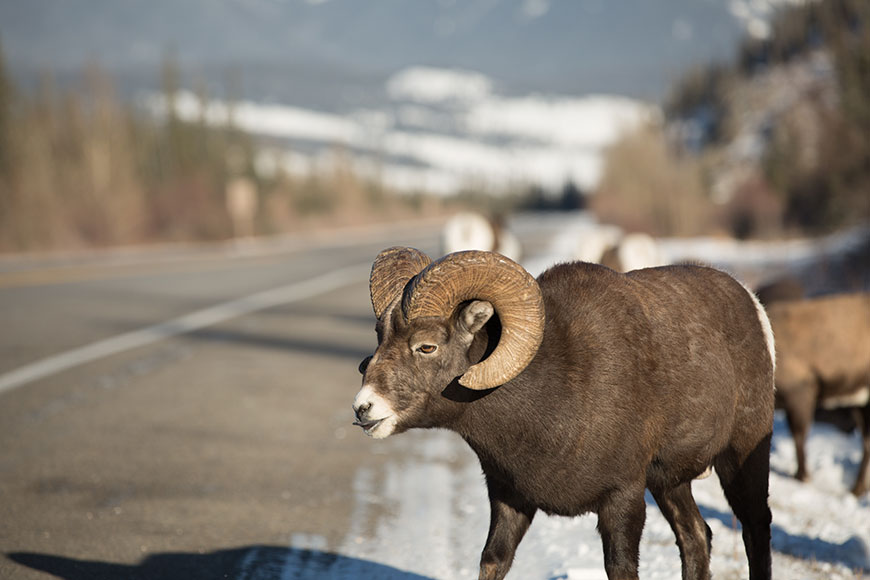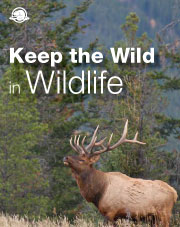
Wildlife watching: take scenics, not selfies!
Wildlife watching
Jasper National Park
Observing wildlife as they go about their natural lives is one of the most fascinating experiences that Jasper can offer. Along with this opportunity, comes the responsibility to treat wildlife with the respect they need and deserve.
Jasper National Park is home to 53 species of mammals that rely on a variety of habitats, some of which we share with them. When visiting the park, please remember that you are visiting the animals' habitat. Their continued health and survival relies on us making as little impact on their home as possible.
Wildlife sightings are common across Jasper’s varied landscape and can be spotted year-round. Bears; such as grizzly bears (with their notably large humps) or black bears (with their tan muzzles), are most commonly seen in the valley bottoms in the spring and early summer.
During calving season (May - June), female elk aggressively defend and protect their young. During rutting season (August – September) bull elk can be particularly belligerent and aggressive.
Among the many other species, you may also see moose, two species of deer (mule and white tailed deer), bighorn sheep, mountain goats, wolves and coyotes to name a few. Lucky hikers, might even spot a rare woodland caribou.
Whether you plan to drive the roads, hike or bike the trails, or relax in town, take time to understand the important precautions wild areas demand. Your responsible behaviour affects the survival of wildlife and helps ensure your safety.
Notice of restriction: Wildlife viewing practices in Jasper National Park
Roadside wildlife viewing is designated as restricted from January 1 until December 31
Help Parks Canada maintain healthy animal populations
Stay in your vehicle

- Slow down, and always obey speed limits
- Use your hazard lights to alert others
- Pull over only where it is safe to do so
- Do not stop in driving lanes
- Observe, take photographs, and continue on
- Leave immediately if a traffic jam develops
Human food and garbage kill wildlife

- Do not feed wildlife
- Do not litter
- Put garbage in its proper place
- Do not burn unwanted food or garbage
- Never leave food unattended
- Properly store all food and scented items
Give wildlife space

- Do not approach wildlife
- All wild animals are unpredictable
- All wildlife are potentially dangerous
- Animals are wild even if they appear tame
- Keep pets on leash
- Stay 30m (3 bus lengths) away from elk, deer, and moose
- Stay 100m (10 bus lengths) away from bears and other carnivores
You are responsible for your own safety

When you are on the trails:
- Travel in groups
- Make noise
- Tune in to your surroundings and remove your headset
- If you encounter wildlife, back away, and return the way you came
- Carry bear spray, know how to use it
- Report all aggressive wildlife encounters to Parks Canada Dispatch: 780-852-6155
- Know the Parks Canada regulations
- Date modified :
